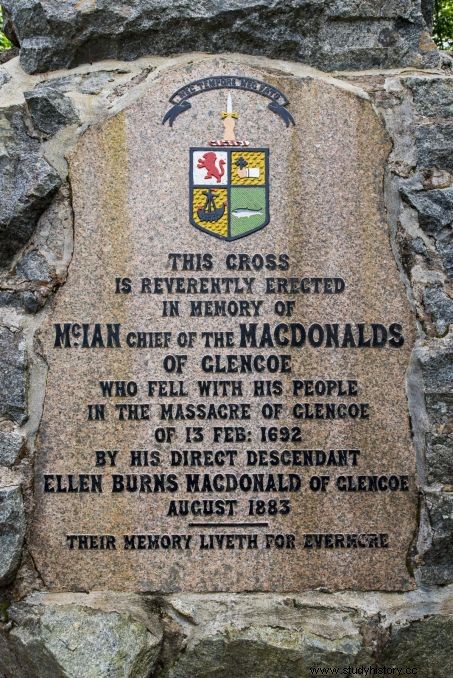Game of Thrones author George R. R. Martin was inspired by the massacre at Glencoe, Scotland, to write the sinister "purple wedding" during which part of the Starks are executed.

The Vale of Glencoe, site of the terrible massacre of the Clan McDonald.
The Rains of Castamère episode , the ninth of the third season of the series Game of Thrones shocked many viewers. It does indeed end with the "purple wedding" during which several of the main characters die, killed by their host's soldiers during a banquet celebrating Edmure Tully's marriage to Roslin Frey. Very violent, the scene marked the directors and even its author George R. R. Martin who later said that it was the hardest event he ever had to write. He also specified that he was inspired by real events to write it, among which the massacre of Glencoe, in Scotland.
Crime scene searches
This historic event took place on February 13, 1692 in the valley of Glencoe, located in the northwest of Scotland and populated by several small hamlets occupied, at the time, by members of the McDonald clan then led by Captain Alistair McIain. The latter had to pledge allegiance, like all the other clans, to King William of Orange (William III) but he encountered several delays in his steps and did not succeed before January 1, 1692, the date fixed by the King to receive the oaths. Things were about to be settled, however, when 120 soldiers from a rival clan led by Robert Campbell arrived in the valley of Glencoe.

The Glencoe Memorial. Credit:Philippe Clément / BELGA MAG / Belga / AFP
Soldiers showed up to collect taxes and they were received according to the laws of Scottish hospitality. They remained fifteen days in the hamlets of the valley without showing the slightest sign of enmity. Until the morning of February 13 when they began to attack the men of the MacDonald clan, following an order received, signed by Major R. Duncanson and approved by the Secretary of State for Scotland as well as by the King himself. At least 38 men were killed in the morning and the women and children driven from their homes took refuge in the hills where many succumbed to the cold.
Unprecedented excavations
To tell the truth, there is no exact count of the number of dead and wounded made by Campbell's troops. And if this massacre remains very present in the Scottish collective memory, the very places of the drama, the small villages called "clachan", have now disappeared, covered by vegetation, damaged by erosion and sheep farming which is present in the region since the beginning of the 1st century. Only a map, dating from 1750, allows to locate seven of these clachans.
Based on the information from this map, archaeologists, commissioned by the National Trust for Scotland (NTS), a nature conservation NGO, began to excavate the probable areas where these small villages stood. Investigations have been going on for several years and accelerated in early 2019. Scientists have since unearthed three houses, several barns and a grain dryer. The NTS hopes, at the end of the excavation campaign, to have enough elements to reconstruct part of the habitats of the time and better understand the topography of the places where the McDonads were massacred. In Scottish history, another massacre also caught the attention of G. R. R. Martin:the "Black Dinner" of 1440 which saw the assassination of several members of the Douglas clan by allies of the King of Scotland while these were invited to a banquet in Edinburgh Castle.
